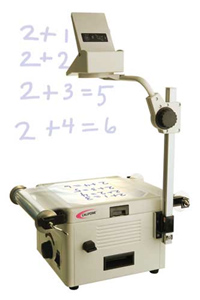
The Wall Street Journal recently reported that high tech companies’ secret weapon is the whiteboard. Moreover, it said that taking a picture of a whiteboard of any business discussion and storing it in the cloud to search and retrieve it later was “unbeatable.”
It’s not. Photos of whiteboards searchable via text recognition are basically useless for real-time collaboration or saving ideas to work on them at ’the next meeting.’ They also don’t get people who ‘aren’t in the room’ involved. This matters for businesses because 37 percent of workers are remote, and 33 percent attend meetings via their device. Static photos won’t help them participate or share.
If that was true, we’d still be using an overhead projector and foils, and taking pictures of it to share. We don’t, and for good reason. Just as presentations evolved with the software and hardware, so must the way we brainstorm and collaborate.
Two weeks ago, I spoke with a Sr. Product Management Executive for a Fortune 500 company. She had a team meeting of 20 or more people live, with more on a conference call line. For those who called in, they could not interact in real time. To make up for this, they took a picture of the whiteboard periodically and emailed to folks on the phone. Not quite what I’d call cutting edge technology.
The Wall Street Journal did get the following correct:
- Whiteboards are a source of innovation and ideation
- Whiteboards are fast and easy to use
- Whiteboards can present a wide range of information
- Whiteboards are technologically backwards

The fact is the physical whiteboard was not designed for how we work today. As businesses and devices have gone mobile, we still engage in the act of whiteboarding; or, more correctly, freeform brainstorming and ideation (what I call visual conversations). This is people drawing, writing and sharing their ideas with each other in real time. We must have a new whiteboard that lets you and others interact and collaborate even when everyone is not in the same room – literally letting you see what the other person is thinking. There is no faster way to bring understanding and alignment in discussions and business.
Think about it. We’ve all seen the whiteboard maxed out in a conference room. Tons of written content. Lots of sticky notes. Images, graphs and pictures taped up.
Now imagine that same white canvas existing virtually. Imagine people able to post sticky notes in real time, but now they are legible. Images are not printed out, but instead inserted into the discussion for anyone to see –wherever they are. While you can still draw, now you can type and even add shapes, too. All of this on an infinite canvas. And your work can be saved, shared, revisited, evolved and more. This is how real meetings and discussion take place.
Do business professionals want this? Absolutely. Beyond the productivity and alignment it will bring, enabling this rich interaction will actually cut costs for companies. Rather than getting on a plane to meet with a customer or colleague, you can have the same intimate, real time discussion from remote locations. Saving money while letting people see what you are thinking.
The physical whiteboard is already being replaced in conference rooms. A few weeks ago, I was on the East Coast talking with one company that was moving from whiteboards to LCD panels. Why? Given the cost of a larger physical whiteboard at $500 to $1000, they would rather invest in a large LCD screen that supported touch. It brings many more opportunities for interaction, rather than the legacy, limited physical whiteboard.
The Wall Street Journal is correct that real time brainstorming and interaction is at the heart of the tech companies. And this interaction takes place on the old, physical whiteboard. But the real opportunity lies not in taking pictures of whiteboards and storing them in the cloud. It is bringing the experience to any team in any business in any location to work together in real time – on a phone, a tablet, a laptop or large touch screen. Now that’s ‘unbeatable.’